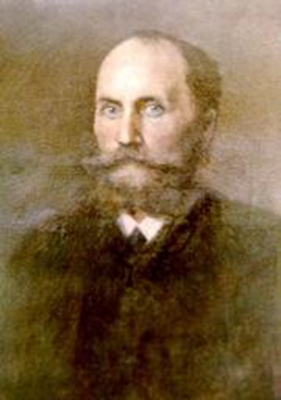Presence, Face and Nature: Max Picard and Ludwig Klages
The presence of the face has a stabilising
virtue as regards time and space. Compare the following passage in Max Picard, in which
presence and eternity are succeeded by ‘temporarily’ expectant time and space.
“So warten Zeit und Raum still vor der Gegenwärtigkeit des Menschengesichtes, sie warten, dass die Ewigkeit hier zu ihnen trete.
“Das Menschengesicht aber
steht da wie ein Platzhalter der Ewigkeit, ruhig und strahlend.
“Dann auf einmal haben Zeit
und Raum lange genug gewartet, sie hören auf, stille zu stehen und brechen
wieder auf. Aber die Zeit bewegt sich rhythmischer nun, wenn sie hier gewartet
hat, und der Raum dehnt sich jetzt geordneter als vorher in seine Weite.
“Das ist das Geschenk der Gegenwärtigkeit an den Menschen: er ist durch sie aus Zeit und Raum herausgehoben”.[1]
“Das ist das Geschenk der Gegenwärtigkeit an den Menschen: er ist durch sie aus Zeit und Raum herausgehoben”.[1]
As appears from this passage, presence is a qualitative category, both affecting time and space with relativity
(‘surrounding’ them with presence), and inculcating them with content. The encounter
with presence transforms time and space, endows them with order and rhythm. Rhythm
vivifies time, gives it pulsation.
We may think here of the impression any encounter leaves us with, be it
strong or subtle. An encounter may be impressive,
inasmuch as it could make us ‘fall’ in love. Also, it could confuse, comfort,
frighten, stir, etc., its recipients. Significantly, people often start
counting as of a meaningful encounter’s occurrence, e.g. Anno Domini (as of the
birth of Jesus), age (as of birth), wedding anniversary, etc.; or they organise
the world according to ‘holy places’ (Jerusalem, Mecca, Lumbini, etc.). As if
spatio-temporal divisions and distributions other
than those based on a meaningful encounter do not really ‘count’.
In Grenzen der Physiognomik
Picard comes back on the presence
character of the countenance. This time, however, he insists on the creative, realising virtue of the act of loving
observation.
“Die Liebe erst verwirklicht ein Menschengesicht.”[2]
“Die Liebe erst verwirklicht ein Menschengesicht.”[2]
Contempt for someone’s face will make that face invisible.
Ludwig Klages likewise insists on
the relation between space and face:
“In the facial image of space [Im Gesichtsbild des Raumes], a Now becomes ostensively present which expands itself into duration.”[3]
“In the facial image of space [Im Gesichtsbild des Raumes], a Now becomes ostensively present which expands itself into duration.”[3]

Similar to Picard, he underlines that space is “a present which can be experienced” (erlebbare Gegenwart).[4] Other than Picard, however, Klages seems to discern a face in space (that is, in ‘sensuous space’ – Sinnenraum –, as opposed to object space – Sachraum).
We are confronted here with the interesting
alternative between ‘nature’ (Klages) and ‘personhood’ (Picard). If a hierarchy
can be established at all, so I would argue, it would have to follow, firstly,
the degree of ‘order’ which will have been created by either of these (“der Raum dehnt sich jetzt geordneter
als vorher in seine Weite”, my italics), and secondly, the degree of
expansion which space will be reaching (“der Raum dehnt sich jetzt … in seine Weite”,
my italics).
[1] Max Picard, Das Menschengesicht, p. 142.
[2] Grenzen der Physiognomik, p. 97.
[3] “Im Gesichtsbild des Raumes wird uns anschaulich gegenwärtig das sich
zur Dauer dehnende Jetzt.” Der Geist als Widersacher der Seele, p. 331
(my trans.).
[4] Ib., p. 321.




Reacties
Een reactie posten